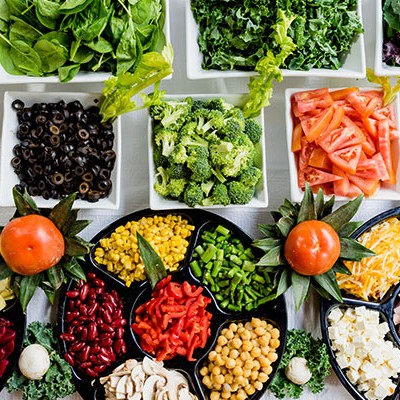Understanding a Nutritional Label

Always compare the 100g column when analyzing labels
On a nutritional label in Australia you will always be presented with two columns. This is a legal label requirement. The first column will state the amount per serve and the second column will be the amount per 100g/ml.
The serving size can be made up by the manufacturer and varies among brands. What this means is that two product could be virtually the same (e.g. Pepsi and Coke) and one has a 50ml serve, and the other a 75ml serve. Given that the 75ml serve is bigger, the per serve column is always going to read worse nutritionally. Companies can essentially make up the serve to whatever they want within reason.
So by looking at the 100g/ml column, you can compare two brands or products fairly against each other without being misled.
It is important to note, that American packaging laws only require companies to display the amount per serve. So if you have an American label that is a 25g serve to compare the numbers simply multiply them to make a 100g serve and then compare.
Kilojoules are not calories
Kilojoules (kJ) are units of energy and are how Australians measure the amount of energy in the food we consume or the amount of energy we exert through activity. However, due to our American influences calories are typically the number you hear spoken about when considering food intake and are also a way of measuring the energy consumed.
Many nutritional panels will not display calories after kilojoules as it is not a requirement under Australian food labeling laws. So a quick calculation is easy if you prefer to count in calorie units: 1 calorie equals 4.2kJ.

There are three macro nutrients
We are all fairly aware that there are three main macro nutrients that we look at when considering a balanced diet. These are protein, fats and carbohydrates.
These three macro nutrients must all be displayed on the nutritional panel, whether they are present or not and are the building blocks when you are considering the food you consume. Macro nutrients will then have additional sub headings. For example, carbohydrates can be broken down into sugars and fats can be broken down into saturated, polyunsaturated, monounsaturated and trans fats.
These sub headings relate to what component of e.g. ‘fats’ are then saturated fats, or what component of carbohydrates are sugars.
This can help you to determine whether the fats you are consuming are good for you or not.
Recommended Daily Intakes (RDIs)
Many food labels will contain ‘Recommended Daily Intakes’. The information provided is relevant to what the company has listed as their recommended serving size, compared to what is recommended for an average Australian adult. These should be considered a rough guideline, as typically many of us will fall outside of the average adult classification. This may be due to our level of energy expenditure, gender, age, pregnancy and a number of other health factors.
Along with this point and linking back to our first sub heading on comparing the 100g serve, it’s important to remember that an RDI is not a recommended intake.
Many people assume that a ‘serving size’ would constitute as a percentage of a daily recommended intake of what a single meal should be. For example, if you have 3 to 4 meals a day, then that means breakfast should take up 25 to 30% of your daily requirements.
If we look at a box of Cocoa Pops, a serving is only 6% of your daily recommended intake, which means you actually need 16 serves (not 3 to 4) to get your full caloric needs, as Kellogg’s list a very small serving size. And if you did consume only Cocoa Pops for the day to meet your calorie needs, you would actually be consuming a whopping 180g of sugar in one day, which is why breakfast cereals (in particular) list a small serving size, to ensure the numbers on the nutritional panel remain low.
This is why it’s very important to compare the per 100g column and a perfect time to dust off your kitchen scales and see the amounts you’re really pouring and consuming.

Ingredients Listing
Under the nutritional panel, you will generally find a list of ingredients. Some of these you may have heard of and others will be very foreign. But what this is, is a list of the ingredients that are actually in the food you’re about to eat.
Under food labelling laws, the foods must be listed in order of the quantities contained in the food. The ingredient that has the highest inclusion is listed first, while the ingredient that has the lowest inclusion is listed last.
The best way to use this is to see if the product you are about to eat is really made up of what it appears to be. For example, you may read a product to be ‘seeded mustard’ but after reading the ingredients you’ll quickly find out that while the first ingredient is mustard seeds, the second ingredient is sugar, which is why it tastes so good.
Some ingredients you will find to be named something you are not familiar with, but primary may be the same thing. For example, sugar has over 61 different names that you may see on a food label. Some of these include sucrose, fructose, rice malt syrup and barley malt just to name a few.
This is where a little research can aid in better understanding the ingredients on the list.
Further your knowledge
These are some of the basic building blocks for understanding nutrition and what is actually in the food you consume. Having this understanding can help you to make better choices.
But to obtain a further understanding of what the food you consume is doing for you, it’s a great idea to understand more about what your body needs as fuel based on your own factors such as gender, physical activity, age and more.
Educating yourself to make more conscious decisions on the food you consume can be one of the best ways to improve your health and get more goodness from what you put in.

Formerly working as part of Bulk Nutrients R&D team for many years, Nicole Frain is a food scientist, personal trainer and a professional international cyclist.
She's applied her learnings at the national stage for bodybuilding, and has several qualifications in Food Science, Nutrition and Business!
More about Nicole Frain





























